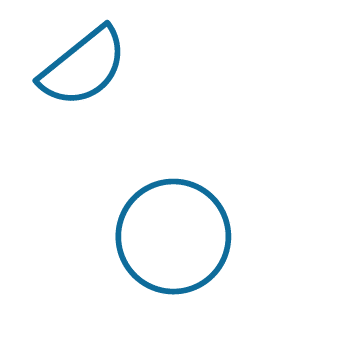This post is in collaboration with Joinative, a native advertising agency, providing campaign management and coaching services. The author is Adelina Karpenkova, Content Marketer at Joinative.
Most of your prospects won’t be ready to buy from you after hearing about your brand for the first time.
Building brand awareness is helpful not only for informing your target audience that your brand exists but also for educating them on the subject they haven’t yet explored properly.
Say, you’re a marketing manager. You want to be a good leader and motivate your team to be productive and organized. And just because you’ve never thought that there’s a tool that can help you become a better manager, you’ve been trying to handle everything manually. One day, when reading a sponsored post on HuffPost, you come across an article about ways to manage marketing teams more effectively. One of the tips there is to use an app that allows you to plan your meetings, streamline objectives, and set tasks. This is how you become aware of the solution to your problems as well as the specific tool that might help you.
While being a bit awkward, the example illustrates the essence of brand awareness campaigns quite well.
To reach new audiences that aren’t searching particularly for your product or service, you need paid advertising. Here’s where online ads and brand awareness campaigns meet.
How can you build brand awareness with native ads?
While lead generation ads have proved to be extremely popular and effective, advertisers often neglect brand awareness objectives when launching paid campaigns. This leads to the misalignment between their marketing strategy and their customer journey.
Regardless of the niche, be it a marketing strategy for driving app installs or boosting sales of an eCommerce website, keeping your brand top-of-mind with your audience is crucial.
It makes little sense trying to sell a product or service to your prospects in their first interaction with your company. Instead, you can move them right into the sales funnel with relevant content.
Here are the top three ways to boost brand awareness with native ads:
- Tell stories. Articles that tell your customers’ stories are particularly effective. However, it’s also a good idea to share the story of your company, like Blinkist often does in their campaigns. By telling authentic stories, you’ll humanize your brand and inspire more trust from your prospects.
- Educate. Create content that’s informative and not salesy. Focus on the questions your prospective customers might ask on their way to finding the solution to their problem.
- Evoke emotions. Readers of publishers’ websites are looking to amuse themselves, and why not give them what they want? When it’s relevant, entertaining and simple content might deliver better results than long-form ‘how-to’ guides.
When combined with content marketing, native advertising delivers exceptional results.
Content is the key to building brand awareness. Nail content marketing, and you’ll start seeing your content building brand recognition and trust without any extra effort needed from your end.
Below, you’ll find great examples of native advertising campaigns that boost brand awareness. It’s worth mentioning that content plays an important role in every campaign on the list.
6 Native ads that boost brand awareness
Native ads are great for reaching upper funnel audiences. The main goal of these campaigns isn’t to sell but to reach new audiences.
1. Cisco
Cisco is a world-famous company that provides solutions for networking, cloud, and cybersecurity. Do they still need to run brand awareness campaigns?
Brand awareness isn’t only about introducing your brand to the world, it’s about becoming the first brand that comes first to people’s minds and they think of the specific category. So, yes, the biggest companies also invest in brand awareness ads, maybe even more actively than lesser-known brands.
Below, you see a native ad campaign run by Cisco in collaboration with The Wall Street Journal. There’s no product page behind the ad – just an article titled ‘Imagining a Future of Work Driven by Inclusive Collaboration.’
The article stresses the impact of technologies on the future of work and casually mentions how Cisco is succeeding in bridging the digital divide. No hard-sell. No pressure. Just a reminder of who the leader in the industry is.
2. Babbel
An e-learning app, Babbel is positioned as an innovative platform for learning any language fast.
Babbel heavily invests in native advertising. One of their ad titles says: ‘Language Expert Shares The Secret To Learning Any Language In 15 Mins A Day,’ enticing audiences of all ages to click on the ad.
From the ad, it’s not yet obvious a user will be introduced to the app. This way, Babbel drives wider audiences to the landing page, where they learn about the company’s unique methods.
3. Wix
Wix is a drag-and-drop landing page building tool with a set of easy-to-use features that don’t require any technical expertise. In their advertising campaigns, Wix stresses anyone can build a website or landing page without extra effort.
Although most of Wix’s ads lead directly to the product landing page, there are a few top-funnel campaigns in their arsenal.
The above-illustrated campaign promotes a how-to article on creating a website that stands out. The post attracts people who might be interested in building their own site and suggests that using the tool is the least troublesome way to reach their goals.
4. Rent The Runway
Rent the Runway is an online service for renting designer dresses and accessories.
The company successfully leverages content in their brand awareness campaigns. Instead of directly promoting the service, they offer their audiences to get aware of the problems first and then gently push them to the solution.
5. Blinkist
Blinkist enables readers to learn insights from top non-fictional books with 15-minute reads.
Readers of publishers’ websites are their perfect audience, and Blinkist makes the most out of this opportunity. The company focuses on article promotion. The practice allows them to drive highly engaged audiences to their blog and eventually turn them into paying customers.
The given campaign is a great example of the use of a story told by a customer for building brand awareness.
6. Santander Bank
Strengthening awareness and trust is especially important for financial companies that should be top-of-mind when their prospects are ready to entrust their financial matters to experts.
To grow and maintain brand awareness, Santander Bank distributes informative articles across the web.
By sharing advice for improving emotional intelligence for leaders, the company appeals to their exact target audience and drives the most relevant people to their website, where they introduce visitors to their services.
Don’t hesitate to invest in brand awareness campaigns
Native advertising has become an integral part of thousands of world-famous brands’ marketing strategies.
However, a lot of companies make the mistake of targeting bottom-of-the-funnel audiences throughout all of their campaigns. It’s crucial to understand the importance of running brand awareness campaigns first.
Along with boosting brand recognition, these campaigns help to build audiences for retargeting campaigns. With RevContent, you can create a setup where people who have interacted with your top-funnel campaigns are automatically added to the remarketing list.




